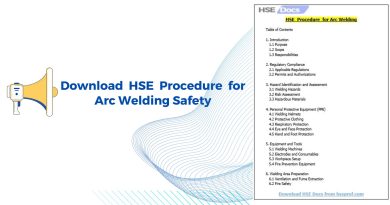Cancer Causing Chemicals Traning HSE Presentaion
This HSE Traning Presentation will help you which chemical is the cause of cancer
The main objectives of the training presentation are:
Define Carcinogens
- Discuss the Local Written Policy
- Discuss the Physical and Health Hazards of Carcinogens
- Discuss Employee Protective Measures
- Discuss Carcinogen Warning Labels
- Introduce the Basic Safety Rules for Carcinogen Use
Facts
- 32,000,000 Workers Exposed to Chemicals Daily
- 575,000 Existing Chemical Products
- Bhopal India Tragedy December 1984
OSHA Hazard Communication Standard
- – Standard: 29 CFR 1910.1200
- – Establishes Worker Right-to-Know?Program
- – Requires Written Hazcom Program
- – Requires Use of Material Safety Data Sheets
- – Requires Use of Labels and Other Warnings
- – Requires Carcinogens to Be Listed
- – Requires Hazards and Precautions to Be Explained
Industrial Disaster
The ‘Bhopal Disaster’ was an industrial disaster that occurred in Bhopal, India, resulting in the deaths of more than 3,000 people, according to the Indian Supreme Court. A more probable figure is that 8,000 died within two weeks, and it is estimated that the same number have since died from gas-related diseases. However, testimonies from doctors who provided medical assistance during the tragedy claim over 15,000 were dead in the first month alone.
The incident took place in the early hours of the morning of December 3, 1984, in the heart of the city of Bhopal in the Indian state of Madhya Pradesh. A Union Carbide subsidiary pesticide plant released 40 tons of methyl isocyanate (MIC) gas, killing approximately 3,800 people. Bhopal disaster is frequently cited as one of the world’s worst industrial disasters.
Today, more than 100,000 people have permanent injuries, light or severe. The groundwater around the plant area is contaminated, and the question of cleaning up the area is still unsolved.

Reproductive Toxins
TERATOGEN:
- The Study of Congenital Malformations
- First Correlated German Measles to Birth Defects
- Causes of Congenital Malformations
- Heredity
- Maternal Diseases Like German Measles
- Maternal Viral Infections During Pregnancy
- Maternal Malnutrition
- Physical Injury
- Ionizing Radiation Exposure
- Chemical Exposure
- Review the Respective Material Safety Data Sheet
- Agents Having Conclusive Teratogenic Effects
- Anesthetic Gases
- Organic Mercury Compounds
- Ionizing Radiation
- German Measles
- Thalidomide


What are Carcinogenic Materials?
- Asbestos
- Ionizing radiation
- Certain chemicals
- Coal tars and coke oven emissions
- Hardwood sawdust (certain species)
- Natural products (progesterone, safrole)
- Ultraviolet radiation
- Tobacco smoke
What is a Chemical Carcinogen?
Hundreds of individual compounds have been shown to induce cancers. Thousands of additional compounds are suspected carcinogens.
Many are commonly used in laboratory operations, shops, and art studios.
Most of them can be seen in the construction as insulation materials, gaskets, brake lining, spray insulation, Rockwool, glass wool
Cancer Development Factors
Dose: Amount and length of exposure. The lower the dose the less likely you are to develop cancer or related diseases.
- Environmental or Lifestyle factors
- Cigarette smoking (co-carcinogen)
- Alcohol consumption (co-carcinogen)
- Diet–high-fat consumption, natural antioxidants
- Geographic location–industrial areas, UV light
- Therapeutic drugs–some are known carcinogens
- Inherited conditions
- Personal Protective Equipment
Respiratory protection: Dust masks, respirators. Respirators are primarily for use in non-lab areas, except for emergency response (spill cleanup)–shops, floor stripping, and construction operations (painting).
Eye protection: Safety glasses, splash goggles, face shields.
Hand protection: Gloves, protective sleeves.
Protective clothing: Lab coats, aprons, Tyvek garments.
OSHA standards for personal protective equipment supersede other OSHA standards.
Storage
- Carcinogens: Stored separately from other materials.
- Separated: Shelving system or secondary containment.
- Secondary containment: Placing chemical containers in an outer container to prevent the release of a chemical in
- the event that its container breaks or ruptures.
- Desiccators, plastic boxes, and bottle-in-can are acceptable secondary containment.
- Storage areas: Labeled Danger–Carcinogens Stored Here.
Housekeeping and Maintenance
- Keep all work surfaces and equipment clean.
- Dry sweeping or compressed air cleaning of floors or work surfaces is prohibited.
- Dry cleaning of surfaces and equipment must be done by vacuum systems with high-efficiency filters.
- All contaminated floor sweepings, debris (paper towels, plasticware), and discarded filters from respirators or
- vacuums must be bagged, properly labeled, and properly disposed of
Decontamination and Emergency Procedures
- Incidental spills may be cleaned up by trained company personnel.
- Larger spills may require notification of emergency response personnel.
- A fire extinguisher should be on hand as required. (Training needed).
- Written emergency response plans should be reviewed during training. (Training required)
Inventory & Waste Carcinogens
Waste containers must be properly labeled and sealed at all times (except when adding or removing waste) and they must have secondary containment.
Dry wastes must be properly disposed of. Plan the use of carcinogens carefully.
Substitute less hazardous materials.
Purchase in the smallest possible quantities.
Do not allow inventories to accumulate.
Promptly dispose of no longer needed materials.
Detoxify carcinogens when capable.
Carcinogen Materials Handling Procedure
- The procedure must contain:
- The name and location of the chemical
- Purchasing and usage authorization
- Training requirements
- Location of use
- PPE required
- Methods of waste disposal
- Decontamination measures
- First-aid measures
- Spill control measures
- Emergency phone numbers
- And any other relevant information.
- Employees must be trained in the content of the procedure
Cancer-Causing Chemicals Safety Program
- Detailed Carcinogen Materials Handling Procedure
- Extensive Employee Training Programs
- Periodic Reinforcement of Training
- Sufficient Discipline Regarding Implementation
If you download the detailed HSE Presentation see the Video then if you want to download click on the Download button
[su_button url=”https://drive.google.com/uc?export=download&id=18oUZVwTA8KLrPvah-TK3pgMNSBKoBN0A” target=”blank” style=”3d”]Download [/su_button]
🔰 Share This Post Maximum
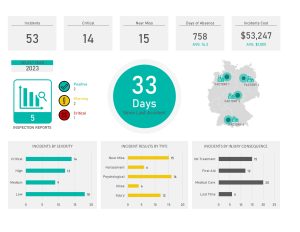
Download HSE Dashboard

Download HSE Statistics Reporting Formats 🚨

Download HSE Inspection Plan & Essential HSE Document

Risk Assessment for Brick Work

Download HSE Report Formats

Download HSE Risk Assessment

Test Your Knowledge with Confined Space Entry Rescue

Download HSE Statistics Report Format

Downloads Editable HSE Rеporting Formats

Download Monthly HSE Rеport
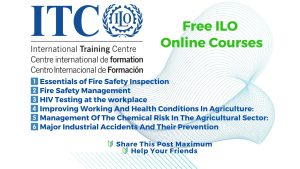
ILO Free HSE Courses

Download HSE Reporting Formats

Download HSE Checklists and HSE Risk Assessments

Enhance Workplace Safety: Free HSE Formats at hseprof.com

Download Comprеhеnsivе HSE Rеport in PowеrPoint Now

Test Your Knowledge about H2S Safety at Workplace
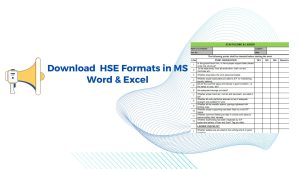
Editable HSE Formats in MS Word & Excel
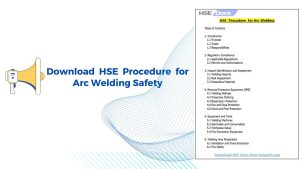
HSE Docs | HSE Procedure for Arc Welding Safety
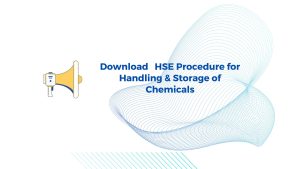
HSE Docs | HSE Procedure for Handling & Storage of Chemicals
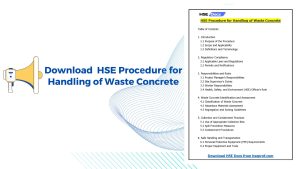
HSE Docs | Download HSE Procedure Handling of Waste Concrete

Download QHSE Publication SOP HSE Docs
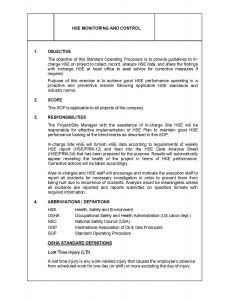
Download HSE Monitoring & Controlling SOP HSE Docs
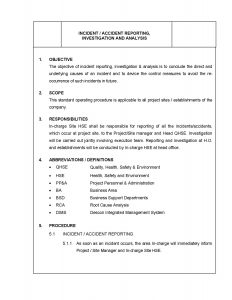
HSE Incident / Accident Reporting SOP HSE Docs
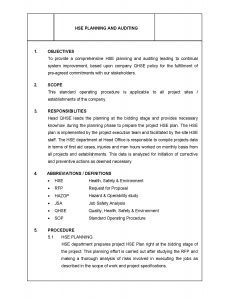
HSE Planning & Auditing SOP HSE Docs
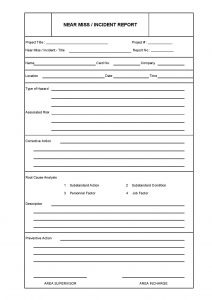
Download HSE Near Miss Report Template HSE Docs

HSE Hazard Identification Sheet Template HSE Docs
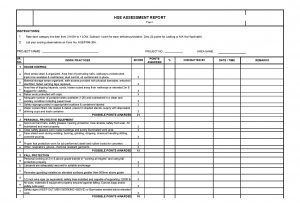
Download HSE Assessment Report Template ( HSE Docs)
Download Typical HSE Hazard List Template( HSE Docs Library )
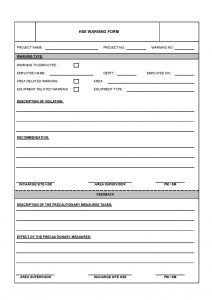
Download HSE Warning Form Template ( HSE Docs Library)
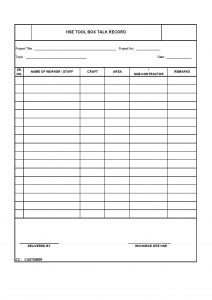
HSE Tool Box Talk Record Template ( HSE Docs Library)

